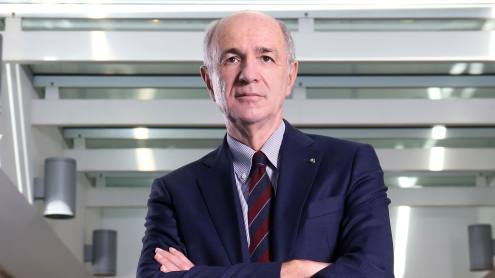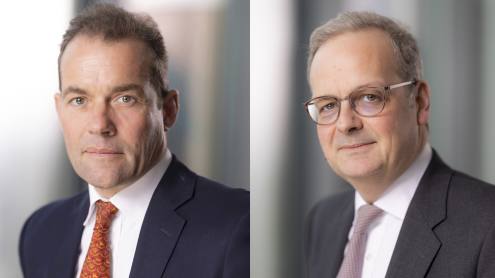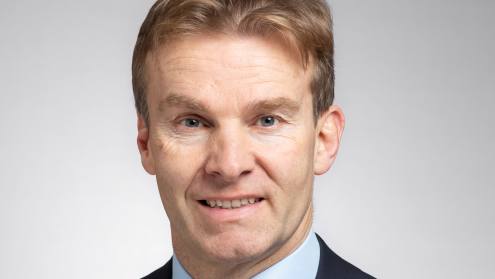Prior to announcing its plans for an initial public offering (IPO) in April 2014, electronic trading firm Virtu Financial had maintained a low profile. Founded in 2008 just as the conventional investment bank dealers were melting down around it, the focus of the public and regulators was understandably elsewhere.
That changed with the publication of Michael Lewis’s book on high-frequency trading (HFT), Flash Boys, which coincided with the planned IPO. The public furore saw the comparatively esoteric subject debated on the floor of the US Congress, with the chair of the Securities and Exchange Commission, Mary Jo White, called to testify on whether regulators were responding robustly enough.
Added to that were reports of a letter to Virtu from New York attorney-general Eric Schneiderman. This later turned out to be a request for information regarding dark pool trading venues operated by other companies, including the traditional dealers. By then, however, the damage was done, and Virtu postponed its IPO.
Keeping its distance
The controversy centres on whether HFT firms gain unfair advantage by detecting price moves ahead of other market participants through the use of computer algorithms that execute huge numbers of small trades at intervals measured in millionths of a second.
While the debate around HFT is still very much alive, Virtu seems to have increasingly dissociated itself from the practices that have earned the ire of policy-makers and regulators. The firm was able to list successfully in April 2015, and its executives maintain that it is a non-bank market-maker, providing continuous two-way prices on electronic trading venues. This is arguably a valuable service to the market, especially at a time when dealers have been cutting inventories of financial products, or even whole business lines, due to higher bank capital requirements.
Official acceptance of new entrant market-makers appears to be growing, particularly in fixed-income markets that are the most capital-intensive for the dealers. In October 2015, the US Treasury added several electronic trading firms, including Virtu, to its borrowing advisory committee. John Shay, Virtu’s senior vice-president for global markets who represents the company on the Treasury committee, says its technological edge is not an end in itself, but a tool for effective risk management within “very rigorous parameters”.
“That does not mean a continuous speed game to effect a trading strategy, it means managing the risk in a way that we as a firm can safely absorb given our capital and tolerances,” he says.
However, Mr Shay emphasises that the non-bank firms naturally operate in a different way to the traditional dealers. Although the new players can fill the gap in terms of volumes and providing two-way pricing, they are not fulfilling exactly the same role. In Treasury markets, Mr Shay says Virtu will make markets and add to risk positions, which can be internalised or hedged out using other correlated instruments such as futures, exchange-traded funds or cleared over-the-counter (OTC) derivatives.
“For years, banks have acted as risk-transfer agents, but since the crisis they have pulled back from that because of their inability to add to balance sheet to take positional risk. Firms like us are moving in and transferring risk, but directional risk trading is not our style,” says Mr Shay.
New trading model
Investment funds who hold much of the stock of bonds are seeking new trading avenues to offset the decline in dealer inventories. That should point to more all-to-all trading venues, but the process of bond market structural changes is far from complete. Mr Shay believes the optimum environment to improve bond market liquidity would be an all-to-all anonymous central limit order book (CLOB) where banks, non-banks and investors can interact for the same highly liquid securities. This is already the model in equities and futures markets.
By contrast, he says, much of the end-client order flow for US Treasuries is currently still being internalised by dealers or traded on a request-for-quote basis on dealer-dominated unlit platforms such as Bloomberg and Tradeweb. This means volumes on the most transparent CLOB platforms are still comparatively small, and do not represent end-client trading.
“The dealers generally hedge out trades in the liquid futures or swaps markets to minimise the market impact, and only in edge cases do they turn to the inter-dealer broker CLOBs for price discovery. That means the CLOBs are not market-making environments, they tend to be exhaust venues dominated by thinly capitalised non-bank traders taking some big intra-day risk positions, which is a potential accelerant if things go wrong. The lit market for treasuries, which should be a benchmark for where they trade, needs to be a healthier market,” says Mr Shay.
In theory, Virtu itself has the capacity to respond to client electronic requests for quotes in theory. But in practice, the largest investment funds are likely to continue prioritising the top dealers or brokers with whom they have already signed full bilateral credit support annex agreements as part of their counterparty credit risk management policies. Realistically, non-bank market makers would need to become clearing members and clear all trades with the large clients to deal with them directly. Hence finding a new way to clear client flow may be the key to unlocking all-to-all venues.
“For now, we are building a franchise by supporting the redistributors of liquidity – the large banks and broker-dealers. They can take our prices in the electronic world away from the lit venues and on-sell them to clients or use them in their internal aggregators. There are definitely signs that the non-CLOB third-party fixed-income venues are starting to take off,” says Mr Shay.
In February 2016, a report by the Bank for International Settlements markets committee in Basel estimated that about 70% of US Treasury and 60% of EU government bond trades in 2015 were electronic. That proportion is up 20 percentage points since 2012. Meanwhile, credit default swap index trading is 80% electronic, while futures (including fixed-income futures) are at 90%.
Stability questions
While regulators seem to accept that electronic market-makers have become part of the landscape, there are still concerns about their impact on the stability of financial markets. The Basel markets committee produced a report in February 2016 on electronic market-making in fixed income. This included a detailed examination of the so-called US Treasury 'flash crash' of October 15, 2014, and the Bund tantrum of May 2015 when there were similar bursts of extreme volatility in German government bonds.
The report found that both principal traders and bank dealers reduced liquidity in the market during the abnormal events, as measured by outstanding orders. However, the report concluded that it is “fairly difficult” to “identify any triggers in a causal sense – a smoking gun”. Speaking at a Financial Times conference in February 2016, Bank of England executive director for financial stability strategy Alex Brazier was clearly not reassured by this conclusion.
“What is unnerving about these flash crashes is that there are ways in which largely electronic markets are operating that are not fully understood. These episodes have not had systemic consequences because they have not lasted a long time, but until we can rule it out, we have to assume that they could,” Mr Brazier warned.
Mr Shay believes the flash events in Treasury or bund markets may originate from circumstances in the OTC markets, because government bonds provide reference pricing for so many swap transactions. When the OTC market spills over to lit venues, there are gaps in liquidity due to the limited bank risk-taking capacity.
“Those gaps can be aggravated by what we call price-removing behaviour by some non-banks – using price discovery to find the next price level for profit. That is latency arbitrage and it is not something we ascribe to or promote, but it is becoming more prevalent,” says Mr Shay.
The response of true market-makers providing two-way prices in those circumstances is to widen spreads to improve their spread capture, helping the market to eventually self-correct. Mr Shay says banks handling massive client flows at the time were pushing those orders via their order management systems into lit markets, effectively allowing non-bank market-makers a brief taste of interacting directly with client flows.
“We liked it, we saw great trading opportunities during that very short event window. But moving flows from banks to non-banks in markets that are not fully lit will cause swings in volatility; you have to expect that,” says Mr Shay.











